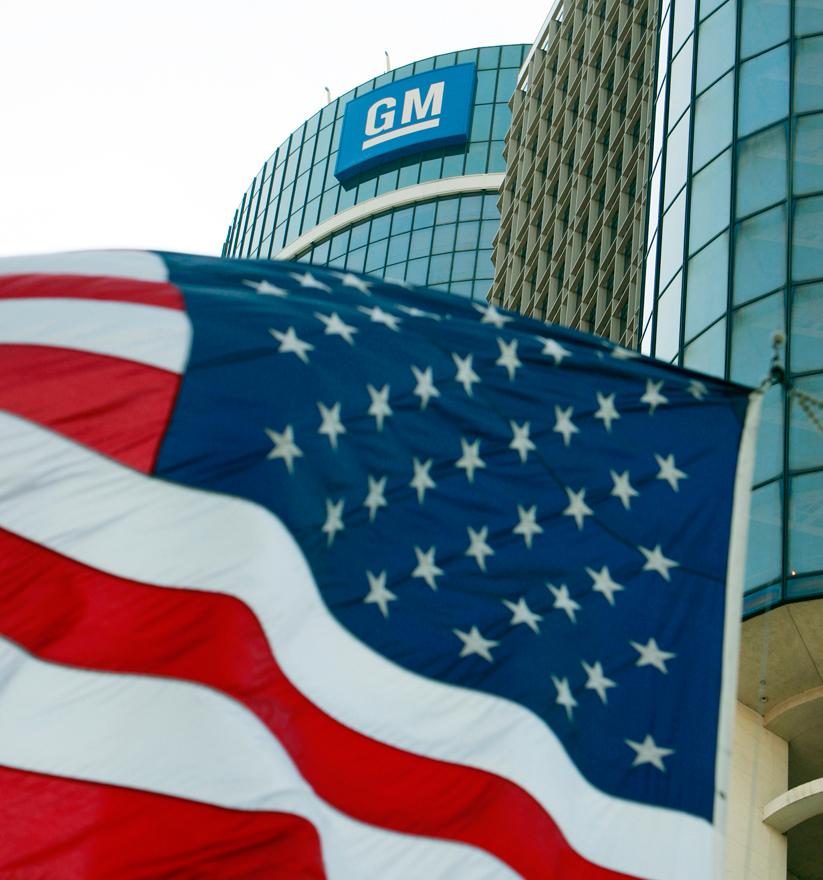At the 2012 Democrat National Convention, Bill Clinton electrified the crowd when he said, “Now there are 250,000 more people working in the auto industry than the day the companies were restructured. Governor Romney opposed the plan to save GM and Chrysler. So here’s another jobs score: Obama two hundred and fifty thousand, Romney zero.”
It certainly appears to be clear evidence that the bailouts of GM and Chrysler were outstanding successes. There’s only one problem; it’s patently false.
Writing in Forbes that same year, Paul Roderick Gregory points out that Clinton was counting all the employees for all the U.S. car market, foreign and domestic, including dealerships. So, add the two groups together, and you get about 236,000 workers. (Sure, that’s not 250,000, but, hey, once you begin with a lie, why not add another?) Gregory then notes that in the year of the bailout, GM North America employed 70,000 in the United States. In the 2012, the number had increased to 74,500, a gain of 4,500. In 2009, Chrysler had 39,000 employees. Today it has 42,200, a gain of 3,200. Add the two together, and we get 7,700, a far cry from 250,000.
In addition, Gregory does not ignore the dealership employee losses as Clinton did. Between 2009 and 2012, GM closed approximately 1500 dealerships, which resulted in 63,000 workers losing their jobs. Gregory closes his piece with this: “According to these numbers, Clinton should have said: Obama minus 58,500 jobs, Romney zero. For those who do not like math, zero is a higher number than 58,500.”
Another myth is that the bailout saved millions of jobs, an assertion repeated last month by GM CEO Dan Akerson. He also said, “ . . . net-net, it was a positive for the U.S. economy.” In a 2012 National Review article, John Lott asserts that the “million” number is impossible. In 2009, if all the GM jobs were eliminated, along with all the jobs of car dealers and parts suppliers, the total could not have been more than 400,000. Today there are not even a million people working in the entire North American auto industry, dealerships, and parts suppliers, and that includes Ford and all foreign car companies. Lott reveals that Obama was told by his economic advisors in 2009 that job losses would be between 10-20 percent of the total work force. Lott concludes, “Even saving 20 percent of 400,000 comes at quite a cost–at least $780,000 per job. How many workers would have been willing to quit working for GM for a $400,000 severance pay?” (Lott arrives at this number based upon the $100 billion bailout price tag.)
The third myth is that everyone benefited from the bailouts. Well, certainly some people benefited, particularly the UAW. But the taxpayers did not. GM still owes the U.S. government $10 billion and has no intention of paying off the debt. GM CEO Dan Akerson explains that the U.S. Treasury took the same risk as anyone who would purchase stock in a company. Well, that’s all well and good, Mr. Akerson, but that money belongs to the taxpayers, not to some unknown Treasury officials.
Another group that lost was the Chrysler bond holders. Companies and individuals who bought bonds in Chrysler were forced to accept 27 cents on the dollar. A case in point, the Indiana state teacher and police pension funds took a loss of $22 million. However, the underfunded United Auto Workers’ pension plan received more than 40 cents on the dollar. Strangely enough, at GM, the bondholders received full pay for their investment. The Treasury gave no explanation for this discrepancy, but when a government picks winners and loser, rational decision making often takes a back seat to political expediency.
A third group of losers are invisible. These are the thousands of workers who might have found jobs if the bailout billions had not been spent. But when the federal government takes money out of the private sector through taxes and borrowing, the net effect is negative. There is less capital available for new businesses to get started or for existing businesses to expand. Thus, potential jobs never materialize. One can only wonder what good might have come from $100 billion being available in the private sector.
One final loser is the free enterprise system. Writing in National Affairs in 2009, Todd Zywicki of George Mason University warned about the implications of the auto bailouts:
Through their actions, both the Bush and the Obama administrations have set dangerous precedents– and made it much more difficult to reverse the trends of executive overreach and excessive government entanglement with private business.
Sold as a means of revitalizing the economy, they [bailouts] are in fact a means of transforming the relationship between the state and the market in a way that empowers large players at the cost of economic growth. The overall effect of such state capitalism is a kind of controlled stasis, in which the preservation of old jobs takes priority over the creation of new ones.
The two biggest winners in the auto bailout were the UAW and President Obama. The UAW remained virtually unchanged and increased its power within the auto industry, and President Obama secured the continued voting and financial support of the union. Talk about a sweetheart deal!
(A final thought: Now that Fiat owns all of Chrysler, if I buy a Jeep, will I have purchased a foreign car? And how does that square with the UAW’s “Buy American” campaign? Just wondering.)




